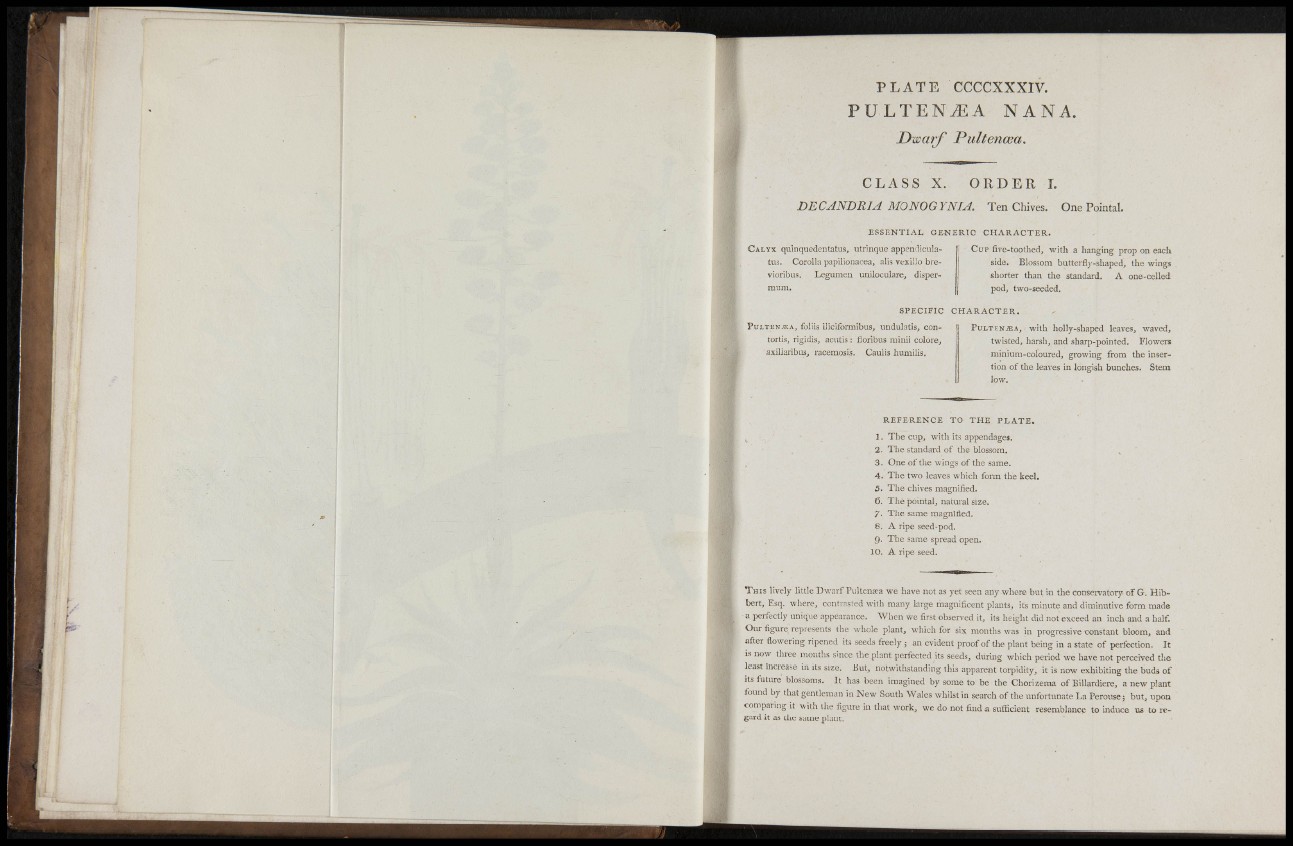
rri -
P L A T E CCCCXXXIV.
P U L T E N ^ A NANA.
Dwai^ Pultenwa.
CLASS X. ORDER L
DECANDRU MONOGYNIA. Ten Chives. One Pointal.
ESSENTIAL GENERIC CHARACTER.
CALYX quinquedentatus, utrinque appeinliculatus.
Corolla papilionacea, alis vex ilio brevioribus.
Legumen uniloculare, dispermum.
CUP five-toothed, with a hanging prop on each
side. Blossom butterfly-shaped, the wings
shorter than tlie standard. A one-celled
pod, two-seeded.
SPECIFIC CHARACTER.
P01.TEN.EA, foliis iliciformibus, undulatis, contortis,
rigidis, acutis : fioribus minii colore,
axillaiibiis, racemosis. Caulis huniilis.
PuLTEN^A, with holly-shaped leaves, waved,
twisted, harsh, and sharp-pointed. Flowers
minium-coloured, growing from the insertion
of the leaves in longish bunches. Stem
low.
REFERENCE TO THE PLATE.
1. The cup, with its appendages.
2. The standard of the blossom.
3. One of the wings of the same.
4 . The two leaves which form the keel.
5. The chives magnified.
6. The pointal, natural size,
7. The same magnified.
8. A ripe seed-pod.
g. The same spread open.
10. A ripe seed.
T H I S lively little Dwar f Pultensea we have not as yet seen any where but in tlie conservatory of G. Hibbert,
Esq. where, contrasted with many large magnificent plants, its minute and diminutive form made
a perfectly unique appearance. When we first observed it, its height did not exceed an inch and a half.
Our figure represents the whole plant, which for six months was in progressive constant bloom, and
after flowering ripened its seeds freely ; an evident proof of the plant being in a state of perfection. It
is now three months since the plant perfected its seeds, during which period we have not perceived the
least increase in its size. But^ notwithstanding this apparent torpidity, it is now exhibiting the buds of
its future blossoms. It has been imagined by some to be the Chorizema of Biliardiere, a new plant
found by that gentleman in New South Wales whilst in search of the unfortunate La Perouse; but, upon
comparing it w ith the figure in that work, we do not find a sufficient resemblance to induce us to regard
it as the same plant.